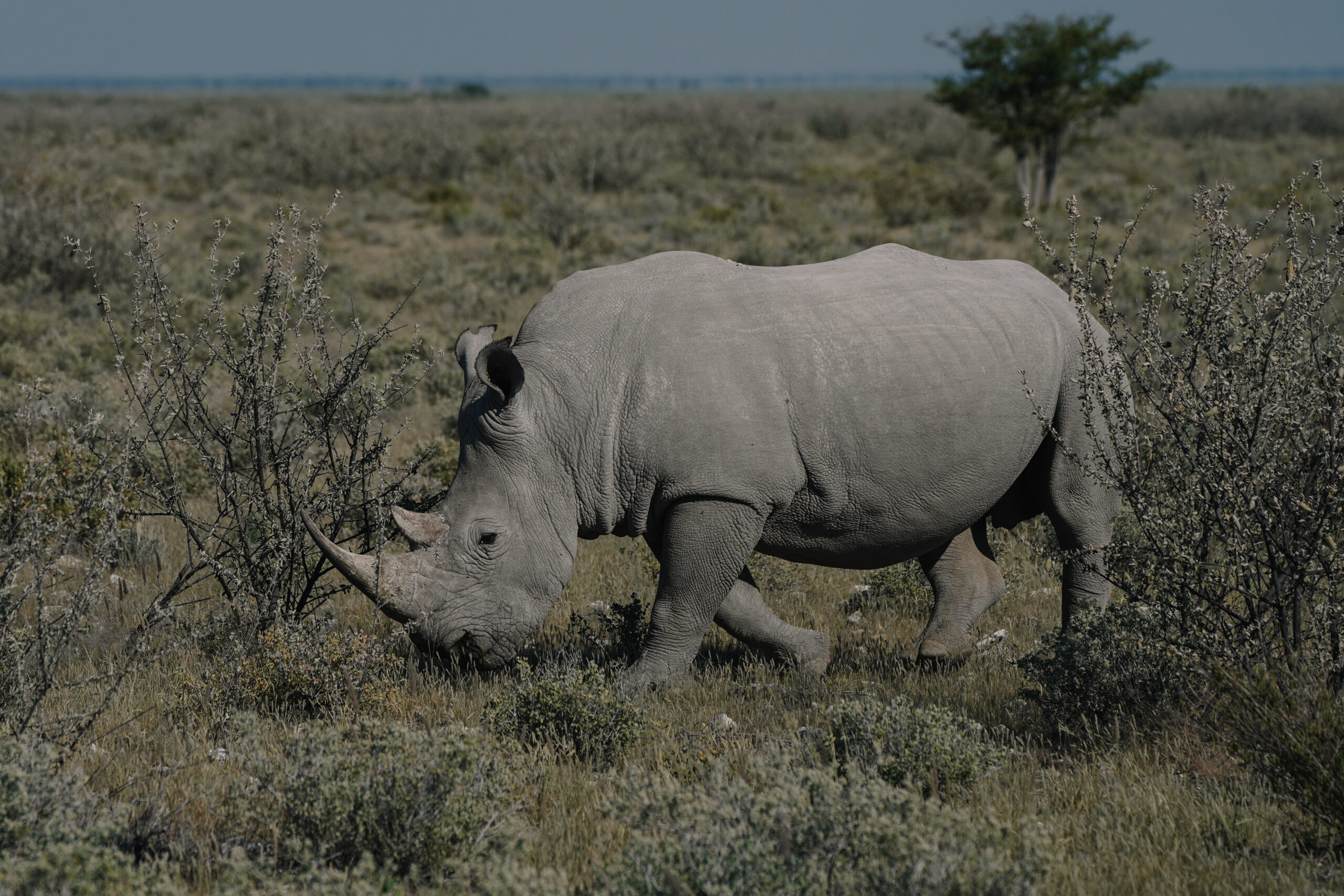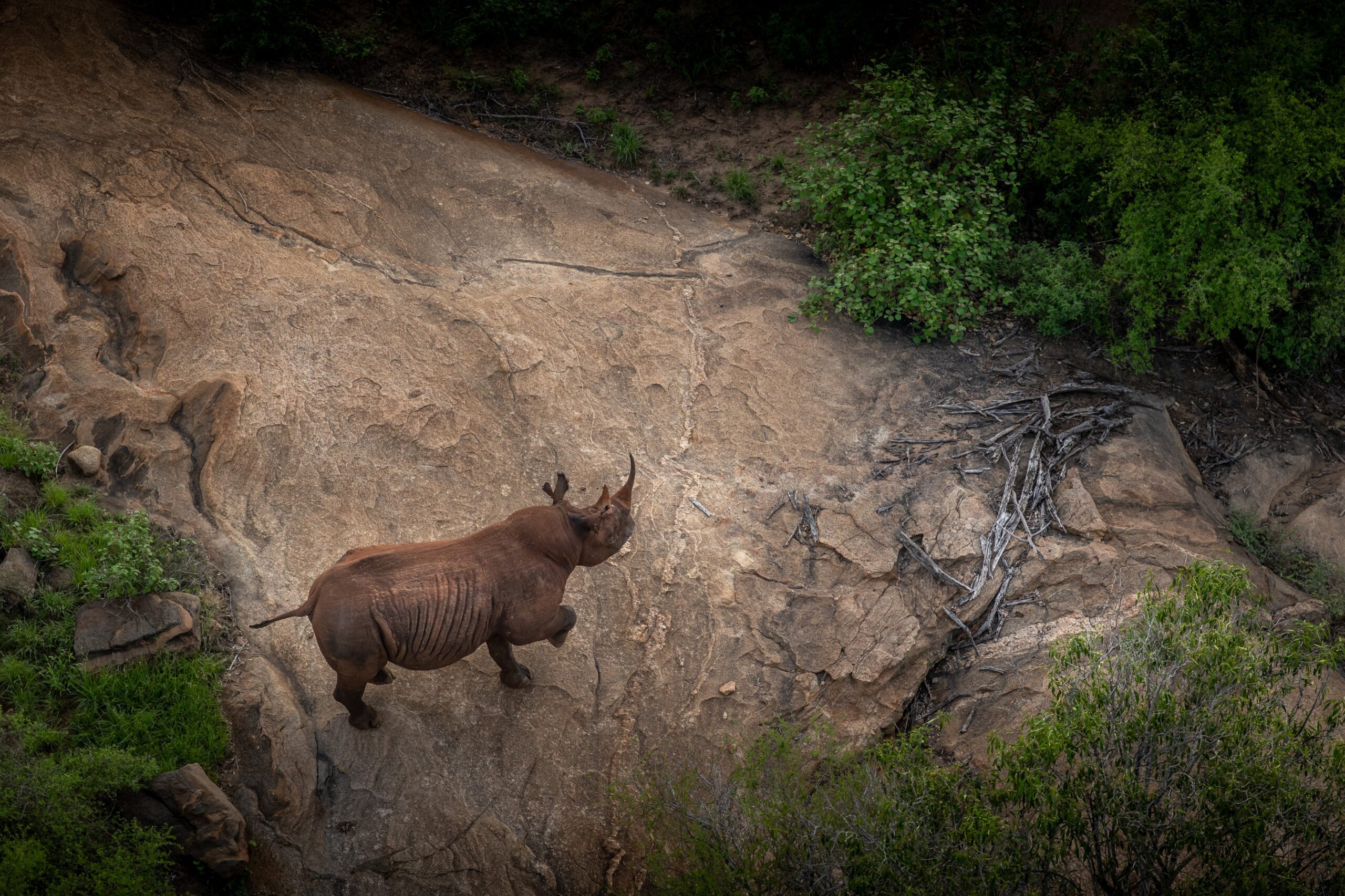What rhino species still remain?
Today, only five rhino species survive worldwide. Each one faces unique threats and challenges, from habitat loss to poaching.
| Species | Location | IUCN Status |
|---|---|---|
| Black Rhino (Diceros bicornis) | Eastern and Southern Africa (Kenya, Namibia, South Africa, Zimbabwe) | Critically Endangered |
| White Rhino – Southern (Ceratotherium simum simum) | Southern Africa (South Africa, Namibia, Botswana, Kenya) | Near Threatened |
| White Rhino – Northern (Ceratotherium simum cottoni) | Functionally extinct (only 2 females remain in Kenya) | Critically Endangered |
| Greater One-Horned Rhino (Rhinoceros unicornis) | India and Nepal | Vulnerable |
| Javan Rhino (Rhinoceros sondaicus) | Only found in Ujung Kulon National Park, Indonesia | Critically Endangered |
| Sumatran Rhino (Dicerorhinus sumatrensis) | Indonesia (Sumatra and Borneo, fragmented populations) | Critically Endangered |
What rhinos went extinct?
Prehistoric extinctions:
-
Woolly Rhinoceros (Coelodonta antiquitatis): Once roamed Ice Age Europe and northern Asia. Went extinct around 10,000 years ago.
Modern extinctions:
-
Western Black Rhino (Diceros bicornis longipes): Declared extinct in 2011 due to rampant poaching.
-
Northern White Rhino: Functionally extinct, with only two females alive today in Ol Pejeta Conservancy, Kenya.
These losses underscore how quickly a species can vanish under pressure from poaching, land loss, and poor governance.
Are rhino populations stabilising?
Rhino populations vary widely depending on region and species.
In Kenya, black rhino numbers are slowly rising, thanks to strong protection and coordinated conservation efforts. White rhinos, though not native to Kenya, have been successfully reintroduced to private conservancies and national parks. In Tsavo Conservation Area, we saw a 5.6% increase in black rhino populations in 2024 alone.
Elsewhere in Africa:
-
Southern White Rhino populations remain under pressure from poaching, particularly in South Africa.
-
Namibia and Botswana have made gains, but these populations remain vulnerable to trafficking networks.
In Asia:
-
The Greater One-Horned Rhino is doing relatively well in India and Nepal, though still threatened by encroachment and flooding.
-
Javan and Sumatran Rhinos are in critical danger, with tiny populations and no breeding between subgroups.
What rhino is close to extinction?
-
Javan Rhino: Fewer than 80 individuals remain, all in one national park.
-
Sumatran Rhino: Less than 50 scattered individuals remain in fragmented populations.
-
Black Rhino: Still critically endangered, though slowly increasing due to intensive conservation.
-
Northern White Rhino: Functionally extinct.
Without sustained protection and international support, these species face irreversible decline.
Why are rhinos hunted?
Rhinos are hunted primarily for their horns, which, despite being made of keratin, the same substance as human fingernails, are falsely believed to hold powerful medicinal properties. In traditional Chinese medicine, rhino horn has long been used as a supposed remedy for fever, gout, and detoxification. In parts of Vietnam and China, it has become a status symbol among the wealthy, prized less for its function than for what it represents. In Yemen and Oman, rhino horn has also been used to craft ceremonial dagger handles, further driving demand.
This belief-driven market has given rise to a high-value black market that fuels sophisticated poaching operations across Africa and Asia—placing rhinos at risk, even in heavily protected areas.
The incredible resurgence of the Southern White Rhino
Once thought extinct, the Southern White Rhino is a remarkable conservation success story:
-
1900s: Population dropped below 50 individuals, confined to Hluhluwe-iMfolozi Park, South Africa.
-
1950s–60s: Natal Parks Board launched protection and recovery efforts.
-
1960s–80s: Operation Rhino, led by Dr. Ian Player, began translocations to repopulate other regions.
-
1980s–2000s: Rhinos moved across southern Africa and to countries like Kenya, Botswana, and Uganda.
-
2000s–present: Over 18,000 Southern White Rhinos now exist globally, largely thanks to translocation and private conservation.
It is proof that even critically endangered species can bounce back—with funding, political will, and long-term vision.

What Tsavo Trust is doing to protect rhinos
In the Tsavo Conservation Area, Tsavo Trust works in close partnership with the Kenya Wildlife Service to protect black rhinos—the only rhino species currently found in Tsavo.
At the heart of these efforts is a single, vast Intensive Protection Zone (IPZ), where rhinos are monitored and safeguarded around the clock. From the air, our patrol teams track rhino movements, detect threats, and direct ground teams in real time. GPS collaring and advanced tracking allow us to respond swiftly and strategically to emerging risks across this challenging terrain.
Equally important is our work with neighbouring communities. Through outreach and education, we help reduce human–wildlife conflict and strengthen local support for rhino conservation.
With fewer than 800 black rhinos left in Kenya, every protected space counts. In Tsavo, we are doing everything we can to ensure these ancient animals survive for generations to come.

Where to see rhinos in Kenya
Here is a brief guide to some of the best places to see black and white rhinos in Kenya.
-
Nairobi National Park – 50+ black rhinos in high density.
-
Ol Pejeta Conservancy – Largest black rhino population in Kenya (100+).
-
Lewa and Borana Conservancies – Home to nearly 90 black rhinos combined and dozens of white rhinos.
-
Tsavo West (Ngulia Sanctuary) – 78 black rhinos under intensive protection.
-
Lake Nakuru National Park – Around 60 rhinos, both black and white.
-
Meru National Park – Around 25 black and 55 white rhinos in a 48-sq-km sanctuary.
-
Solio Game Reserve – High rhino densities, up to 50 seen on one plain; holds 22% of Kenya’s rhino population.
-
Masai Mara – Black rhinos present but elusive.
-
Aberdare National Park – Black rhinos are here but rarely seen.
-
Ruma National Park – Small population of around 30 rhinos.
Rhinos on the edge, and the path forward
Rhinos are among the most iconic yet imperiled animals on Earth. Their survival is possible, but not guaranteed.
The success of the Southern White Rhino shows what’s possible with time, teamwork, and funding. The continued efforts in Kenya, especially in places like Tsavo, offer hope—but that hope depends on action.
Support rhino conservation. Support Tsavo Trust. Donate today and help protect Kenya’s black rhinos for generations to come.

